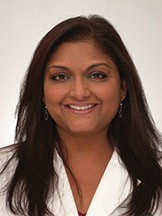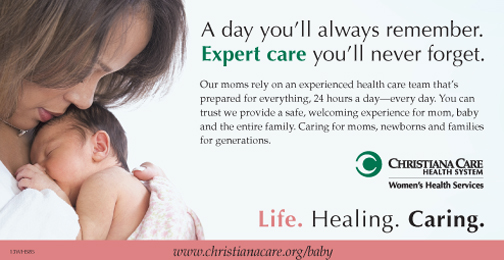Half Of All Women Will Develop Fibroids; What Treatment Is Best For You?

By Nima Patel, M.D., MS, FACOG
By the time women reach menopause, almost half will develop fibroids. Fibroids can begin forming in women as early as the age of 20. They become more common as women get older, peaking in their 40’s. Fibroids are common, and a doctor who specializes in gynecological care can help with treatment or management options.
Fibroids are usually non-cancerous growths made of muscle and connective tissue. They can be as small as a pea or as large as a cantaloupe, with most measuring somewhere in between. Typically, women have more than one fibroid.
While fibroids are not life threatening, they can make life uncomfortable. The most common symptom is irregular bleeding. Women with fibroids can experience heavier, longer menstrual periods sometimes with blood clots and with more cramping. Many women just feel bloated, as if there is something inside them and their pants are too tight. They may experience back pain or a sensation of pushing on the bladder causing them to have to urinate more frequently.
Most pregnant women who have fibroids don’t have complications. In those that do, the most common complication is pain and this is correlated to the possible increase in size of the fibroid. There is a small increased risk for having preterm labor or preterm birth if the fibroids are large. Expectant mothers are generally monitored closely with frequent ultrasounds.
Causes of Fibroids and Diagnosis
While we don’t know exactly what causes fibroids or how to prevent them, we do know that fibroids are genetic and run in families. Women of African descent are more likely to develop fibroids than women of Asian or European descent.
Fibroids can grow by latching onto a blood supply and using the hormones in a woman’s body. Sometimes, the bleeding they cause is so severe that the patient may need a blood transfusion.
To properly diagnose fibroids, women may receive an ultrasound or an MRI to determine the size, number, and location of the fibroids. Another procedure is a hysteroscopy. A hysteroscope is a long, thin camera that is inserted through the vagina and into the uterus to examine the inside of the womb. This can be done in the office or in an outpatient surgery center. The gynecologist may also recommend a biopsy of the lining of the uterus to evaluate for any uterine cancer.
Treatment of Fibroids
Fortunately, there are a lot of options for women who need relief from fibroids. But there is not a one-size-fits-all solution. Each treatment is tailored to suit the individual woman and her needs.
Treatment of fibroids depends not only on the size, location and number of fibroids but also on the symptoms most bothersome to the woman. In addition, the woman’s age, her general health, her symptoms, and whether she wants to have babies in the future are important factors in determining the best treatment option.
Birth control pills, hormonal shots, or progesterone intrauterine devices (IUDs) can help to control bleeding from fibroids. Ibuprofen and similar drugs can help reduce pain from cramps and iron supplements can help women who bleed heavily avoid becoming anemic.
One non-surgical option is a uterine artery embolization, performed by an interventional radiologist, which blocks the blood flow to the fibroid.
Another non-surgical option is a medication that creates temporary menopause. The fibroids shrink, but the patient also experiences the side effects of menopause: hot flashes, vaginal dryness and mood swings. These are temporary and can be controlled with low dose hormonal add-back therapy. When a woman stops taking the medication, the fibroids may grow back.
Fibroids shrink after menopause because levels of the hormone estrogen drop significantly. For some women, watchful waiting may be the best treatment. If women are near menopause and their symptoms are not interfering with their daily lives they may want to hang in there and let nature take its course.
Surgery May Be Best Option
Sometimes, surgery is the best option. A surgical procedure called myomectomy removes the fibroids from the uterus. But it is not a permanent fix as it won’t prevent new fibroids from growing back. This surgery is usually reserved for women who are interested in maintaining the option of having more children.
Radiofrequency ablation is a newer treatment that uses heat to destroy the fibroid tissue. Radiofrequency ablation is an outpatient procedure performed by laparoscopy, in which the surgeon works through tiny incisions in the abdomen. The fibroids remain, but they shrink in size, typically about 25-40 percent within three months of the procedure.
When other measures don’t provide relief or are not a good option, a woman may opt for a hysterectomy which is the surgical removal of the uterus. The surgery usually can be done using minimally invasive techniques, either by laparoscopy or robotic surgery. This allows the woman to have her hysterectomy as a same-day procedure, so she can recover at home and get back to her routine within a few weeks. In most cases, the ovaries are not removed and the woman will not go through instant menopause following the hysterectomy.
Women who have extremely large fibroids might require an abdominal hysterectomy in which the uterus is removed through an incision in the abdomen. A patient can expect to stay in the hospital for a day or two and have a recovery period of four to six weeks.
If you have fibroids, talk to your doctor. There are many treatment options. Together, we will find the right one for you.
Nima Patel, M.D., MS, FACOG, is a gynecologist specializing in minimally invasive gynecologic surgery at the Center for Advanced Gynecology and Minimally Invasive Surgery at Christiana Care. She also serves as Associate Program Director of the Christiana Care Obstetrics & Gynecology Residency Program.
To make an appointment, contact:
Christiana Care’s Center for Advanced Gynecology and Minimally Invasive Surgery
Medical Arts Pavilion 2
Suite 2103
4735 Ogletown-Stanton Rd
Newark, DE 19713
302-623-4410


